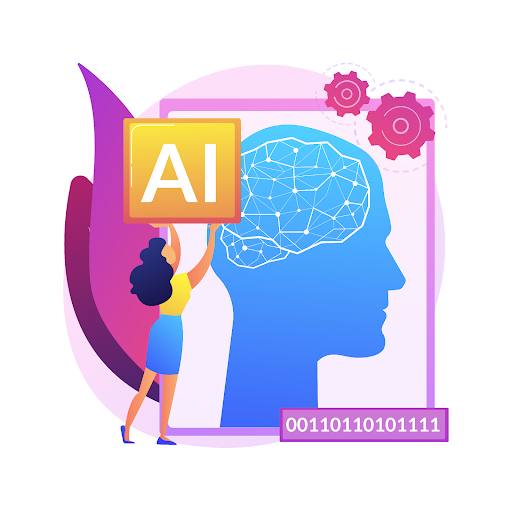Generative AI is rapidly emerging as one of the most transformative technologies of the decade. Unlike traditional AI systems that focus on analyzing data, detecting patterns, or making predictions, generative AI creates new outputs. It writes, summarizes, reasons, recommends, generates code, and simulates scenarios. This shift from analytical capabilities to creative, cognitive capabilities is reshaping how enterprises operate.
Today, the most profound impact can be seen in two critical functions: generative AI in finance and generative AI in IT. These functions manage vast amounts of data, require rapid decision-making, and demand precision, efficiency, and adaptability. Generative AI brings new levels of speed, intelligence, and automation that traditional tools cannot match.
This article explores how generative AI is transforming modern businesses, with a deeper focus on its role in finance and IT.
Why Generative AI Is Reshaping the Enterprise
Generative AI represents a structural shift in how work is performed. It has three core characteristics that make it uniquely valuable:
1. It accelerates knowledge work
Generative AI can draft reports, summarize data, create documentation, and interpret complex information in seconds.
2. It makes insights more accessible
Instead of manually analyzing datasets, teams receive narrative explanations, recommendations, and decision-ready content.
3. It supports creativity, reasoning, and problem solving
Generative AI can brainstorm strategies, simulate business scenarios, generate code, and create step-by-step solutions.
These capabilities make it a game changer for functions that rely heavily on analysis, documentation, and strategic insight.
The Enterprise Advantages of Generative AI
Organizations implementing generative AI experience value across four dimensions:
Faster decision cycles
Real-time summarization and scenario modeling enable leaders to act sooner.
Higher productivity
Manual or repetitive processes—from report drafting to code debugging—can be automated.
Better accuracy and compliance
Generative AI reduces errors, improves standardization, and enhances audit trails.
Improved employee experience
Teams spend more time on strategic work, strengthening engagement and innovation.
Because of these benefits, generative AI is becoming a core pillar of enterprise operating models.
Generative AI in Finance: Enabling Intelligent, Insight-Driven Performance
Finance is one of the earliest and most enthusiastic adopters of generative AI. The function is information-heavy, documentation-intensive, and requires precision and speed. As a result, generative AI in finance is revolutionizing the way financial teams interact with data, processes, and decision-making workflows.
1. Financial analysis and reporting
Generative AI can summarize millions of data points and produce narrative insights, variance explanations, and performance summaries instantly. This reduces hours of manual analysis.
2. Forecasting and budgeting
Generative models can generate scenario-based narratives, create assumptions, analyze drivers, and assist in building predictive forecasts.
3. Month-end close acceleration
Generative AI assists with drafting reconciliations, preparing journal entry narratives, reviewing documentation, and identifying anomalies.
4. Treasury and risk intelligence
It can simulate risk scenarios, evaluate liquidity concerns, and offer narrative summaries of exposures or market changes.
5. Audit and compliance support
Generative AI automates audit preparation, drafts policy documentation, interprets regulatory text, and identifies potential compliance risks.
6. Spend and procurement analysis
Finance teams use generative AI to identify overspending patterns, summarize supplier performance, and recommend optimization opportunities.
By helping teams analyze more, produce more, and advise more, generative AI transforms finance into a faster, more strategic, and more proactive function.
Generative AI in IT: Transforming Technology Operations and Engineering
While finance benefits from narrative and analytical augmentation, generative AI in IT brings a different but equally powerful set of capabilities. IT functions operate in a fast-moving ecosystem with priorities spanning system availability, cybersecurity, software development, data architecture, and digital infrastructure. Generative AI elevates these capabilities through automation, code generation, rapid troubleshooting, and intelligent operations.
1. Code generation and software development
Generative AI can write code, debug errors, suggest improvements, and automate documentation. Developers can build and test applications significantly faster.
2. Intelligent IT helpdesk and incident support
IT support teams use generative AI to:
- Draft resolution steps
- Analyze incident patterns
- Provide automated responses
- Assist users in real time through conversational interfaces
This reduces resolution time and improves service quality.
3. Cybersecurity and threat detection
Generative AI helps security teams by detecting anomalies, drafting incident reports, simulating threat scenarios, and recommending preventive actions.
4. Infrastructure and cloud management
Generative AI assists with configuration scripts, capacity planning, provisioning automation, and identifying system bottlenecks.
5. Knowledge base and documentation
IT teams can automatically generate product documentation, release notes, troubleshooting guides, and architectural summaries.
6. Intelligent DevOps and automation
Generative AI integrates with CI/CD pipelines to optimize build processes, automate testing scripts, and provide insights on deployment risks.
With these capabilities, IT evolves from a support function to a strategic enabler of innovation.
Why Governance Matters in Generative AI Adoption
While generative AI delivers substantial value, it also introduces risks that must be managed carefully:
- Data privacy and sensitive information exposure
- Inaccurate AI-generated outputs
- Bias and fairness concerns
- Lack of explainability and auditability
- Security risks and model manipulation
- Overreliance on automated decision-making
Enterprises must implement governance frameworks that include:
- Responsible AI guidelines
- Human-in-the-loop controls
- Model validation and testing
- Role-based access and security
- Continuous monitoring and drift detection
- Clear accountability structures
Governance ensures generative AI is reliable, safe, and aligned with organizational values.
The Future of Generative AI Across the Enterprise
Generative AI is moving fast, and its next wave will reshape how companies operate at every level.
Autonomous workflows
Finance and IT processes will run end-to-end with minimal human intervention.
Enterprise-wide intelligence
Cross-functional insights will be auto-generated across finance, IT, HR, operations, sales, and supply chain.
Personalized digital experiences
Employees will receive personalized guidance, recommendations, and training based on their roles and skills.
Predictive leadership insights
Executives will rely on generative models to simulate business scenarios and recommend strategies.
Collaborative AI agents
Multiple AI agents will work together across finance and IT to execute tasks, coordinate workflows, and solve complex problems.
Generative AI is evolving into a core operational layer that will power the future enterprise.
Conclusion
Generative AI is transforming modern organizations with unprecedented speed and depth. It enhances how teams think, work, analyze, and innovate. Through generative AI in finance, enterprises gain smarter forecasting, faster analysis, and automated reporting. Through generative AI in IT, they accelerate development, improve cybersecurity, and deploy intelligent automation across digital infrastructure.
As generative AI becomes a foundational enterprise capability, businesses that adopt it strategically—supported by strong governance and responsible implementation—will lead the next era of digital performance.

















